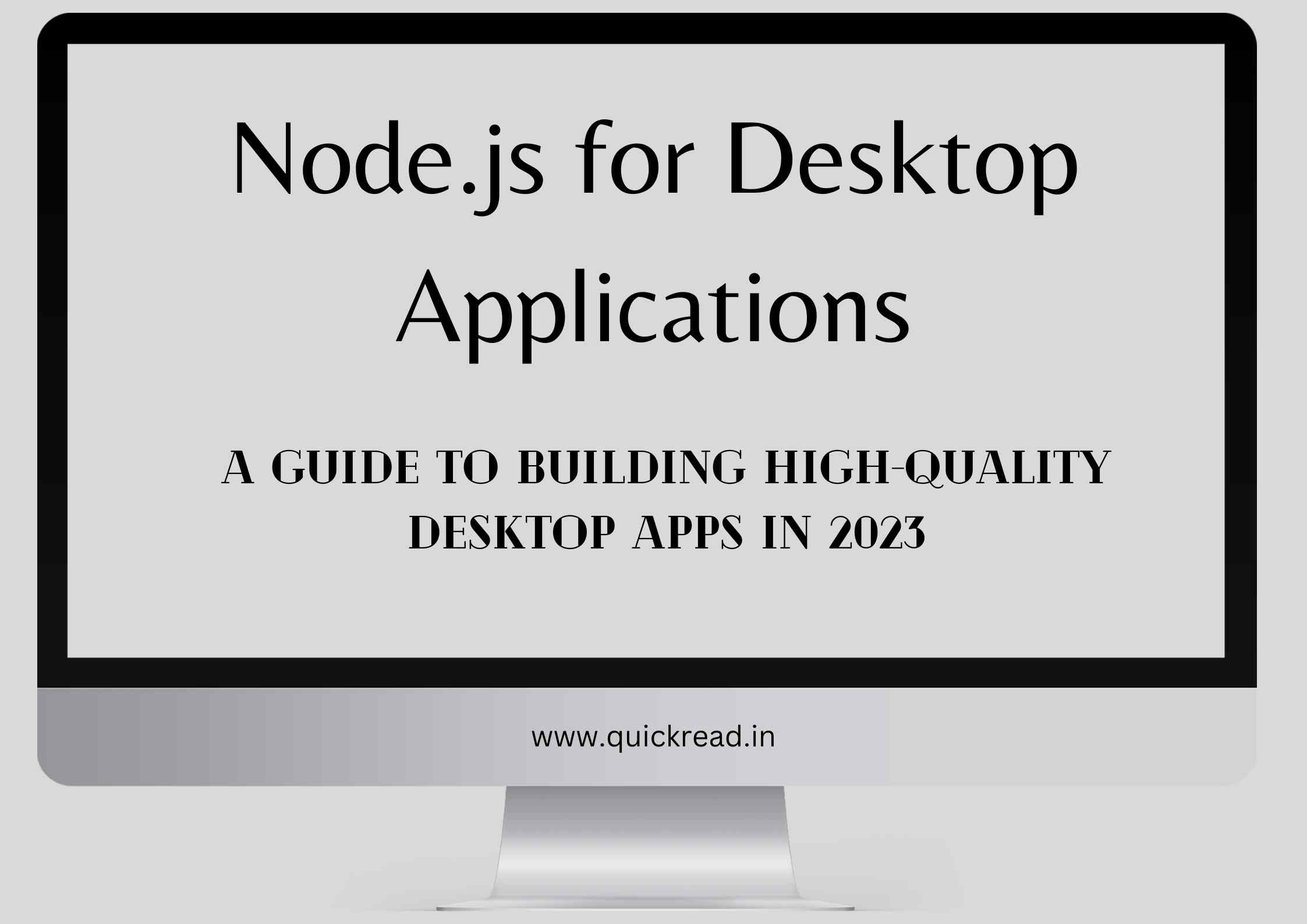Introduction
Node.js has become a popular platform for building scalable network applications and APIs. But Node.js also introduces some unique benefits for crafting desktop applications – especially if performance is critical.
In this comprehensive guide, we’ll analyze the capabilities of Node.js for building desktop apps from a technical perspective.
Introduction to Node.js for Desktop Applications
Some of the key technical advantages Node.js brings for desktop app development:
- Asynchronous I/O – The event-loop model avoids UI blocking issues. Long running tasks can be offloaded.
- Chrome V8 Performance – Apps start instantly and remain consistently fast thanks to the highly optimized JS engine.
- Npm Ecosystem – Access to hundreds of thousands of reusable packages for every task.
- Familiar Skills and Paradigms – Leverage expertise from web development like REST APIs, realtime, testing.
- Cross-Platform – Write once and deploy across Windows, macOS and Linux.
So Node.js introduces many capabilities that translate well to crafting responsive and resilient desktop experiences.
Choosing a Node.js Desktop App Framework
There are two open source frameworks that excel for building desktop apps with Node.js:
Electron
Electron allows building cross platform desktop apps using web technologies like HTML, CSS and JavaScript. Apps can directly access both Node.js and Chromium APIs.
Some examples of popular Electron apps include Visual Studio Code, Slack, Discord, Twitch and more.
Technical Pros
- Multi-process architecture
- Native OS integrations
- Auto-updating
- Vast ecosystem of modules
- Packaging and distribution
Technical Cons
- Performance overhead of Chromium
- High memory usage possible
- Not designed for native speeds
Overall, Electron provides an easy on-ramp but performance must be optimized.
Example:
const { app, BrowserWindow } = require('electron')
let mainWindow;
app.on('ready', () => {
mainWindow = new BrowserWindow();
mainWindow.loadURL(`file://${__dirname}/index.html`);
});NodeGUI
NodeGUI utilizes Qt framework to enable building native desktop apps with Node.js + CSS. It renders UIs using GPU scenegraph for maximized efficiency.
Technical Pros
- Native look and feel
- Blistering performance
- Small executable size
- OS-level access
- Latest CSS support
Technical Cons
- Less documentation currently
- Must learn Qt framework
- Smaller ecosystem than Electron
NodeGUI prioritizes outright performance over convenience.
Example:
const { QApplication, QLabel } = require("@nodegui/nodegui");
const app = QApplication.instance();
const label = new QLabel();
label.setText("Hello World!");
label.show();
app.exec();Architecting High-Performance Node.js Desktop Apps
Some best practices for optimal performance:
- Multithreading – Use worker threads for parallelizing heavy operations like computation.
- Asynchrony – Avoid blocking the main thread. Execute I/O and processing in parallel.
- Caching – Cache data or rendered UI components wherever possible.
- Native Code – Utilize native modules for number crunching and system access.
- Render Optimization – Use canvas, WebGL for optimized rendering. Minimize unnecessary re-renders.
- Memory Management – Proactively limit and release memory usage.
Achieving buttery smooth 60fps rendering is key to native app feel.
Optimizing App Lifecycle Performance
Careful handling of lifecycle events is crucial:
- Lazy loading – Load modules only when functionality required.
- Suspend/resume – Save and restore state efficiently on suspend.
- Startup/shutdown – Avoid blocking startup and shutdown sequences.
- Multi-window – Reuse shared state intelligently between windows.
Any perceived lag during lifecycle events negatively impacts user experience.
Building Truly Native Apps with Node.js
For apps requiring unpaid native speeds and instant startup, Node.js can be used with lower level languages:
- C/C++ modules – Execute performance critical code natively.
- Rust bindings – Leverage Rust for parallelism and speed.
- Native UI libraries – For blazing fast UIs.
- Native app containers – Embed Node.js inside a native shell.
This allows balancing performance and productivity.
Handling App Lifecycle and Events
The main process handles key lifecycle events like:
ready– App is ready to runwindow-all-closed– No more visible windowsbefore-quit– App is about to quitwill-finish-launching– App is almost readyquit– App quits all windows
Rigorously testing edge cases around startup, shutdown and multi-window scenarios is crucial for stability. Example problems include:
- Not closing or saving state before termination
- Race conditions with messaging during shutdown
- Resources not properly released
Handling all events gracefully ensures users perceive the app as rock-solid.
Securing Node.js Desktop Apps
Desktop apps require securing access to user data and system resources. Some best practices are:
- Avoid directly exposing the renderer to prevent access to OS resources
- Sanitize and validate all IPC communication
- Use CSP policies to restrict stack to trusted sources
- Disable or restrict remote integrations like Node.js devtools if not needed
- Minimize available Electron APIs to only those required
- Keep dependencies up-to-date to avoid security issues
Proactively securing the desktop app should be a priority throughout development.
Distribution and Updates
For distribution, the app is packaged into platform-specific installers using tools like:
- Electron Forge – packages app and handles auto-updates
- Electrino – builds on top of Electron Forge
- pkg – packages Node.js apps into executables
The packaging tool bundles all required dependencies and assets. Auto-update support is also key for seamless delivery of updates.
Testing installers thoroughly on all target platforms ensures a smooth experience for users.
Conclusion
Node.js introduces many compelling technical advantages for building high-performance desktop apps – its event loop model, V8 optimizations and access to native code.
By carefully optimizing rendering, using native modules, multithreading and efficient architecture – Node.js makes it possible to build desktop apps with 60fps efficiency and instant load times.


